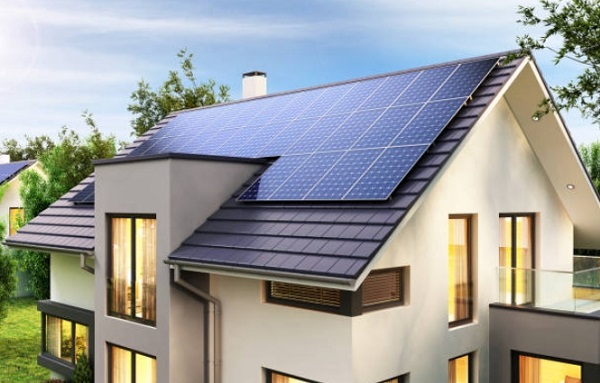Solar panel prices have been a topic of interest and concern for homeowners, businesses, and policymakers in Australia and around the world. As renewable energy sources gain popularity and become more accessible, solar panels have emerged as a viable option for those looking to reduce their carbon footprint and lower their energy bills. However, the prices of solar panels can vary significantly, and understanding the factors influencing these prices is crucial for making informed decisions.
This blog post looks into the various factors that affect solar panel prices in Australia and how they impact consumers and the solar industry.
What Influences Solar Panel Prices in Australia?
Quality and Technology Advancements
One of the most significant factors affecting solar panel prices in Australia is the quality of the panels and the level of technological advancement. Solar panels come in different grades, and their efficiency and durability vary accordingly. High-quality solar panels often come with a higher price tag because they are built to last longer and perform better over time. Manufacturers invest in research and development to improve solar panel technology, which can also drive up prices. However, these advancements can lead to increased efficiency and energy production, making them a worthwhile investment in the long run.
As technology continues to advance, the cost of manufacturing solar panels has been gradually decreasing. Newer manufacturing techniques and materials have made it more cost-effective to produce solar panels, which has contributed to a reduction in prices over time. In Australia, where the solar industry has seen significant growth, consumers can now access more efficient and affordable solar panels than ever before.
Government Incentives and Rebates
Government policies and incentives play a crucial role in influencing solar panel prices in Australia. The Australian government has implemented various schemes and incentives to encourage the adoption of solar energy. One of the most notable programs is the Small-scale Renewable Energy Scheme (SRES), which provides financial incentives for households and businesses that install eligible solar panel systems.
Under the SRES, homeowners and businesses receive small-scale technology certificates (STCs) for their solar panel installations, which can be traded in the market or used to offset the cost of the solar system. The number of STCs a system is eligible for depends on factors such as its location, size, and the type of solar panels used. These incentives effectively reduce the upfront cost of solar panel installations, making them more affordable for consumers.
Additionally, some state governments in Australia offer their own solar rebates and feed-in tariffs, further driving down the cost of solar panels. These government initiatives create a competitive market for solar panel installers, which can put downward pressure on prices as companies strive to offer the best deals to consumers.
Market Competition and Installation Costs
The level of competition in the solar panel market also plays a significant role in determining prices. In Australia, the solar industry has experienced rapid growth, with numerous companies offering solar panel installations. This high level of competition can lead to price fluctuations as companies vie for customers.
Moreover, installation costs can vary widely depending on the location and complexity of the installation. For example, installing solar panels on a residential rooftop may be less expensive than a commercial installation or one that requires specialised equipment, such as ground-mounted solar arrays. These installation costs are often factored into the overall price of a solar system.
To stay competitive and attract customers, solar panel installers may offer promotions, discounts, or package deals that include installation services. Consumers should carefully consider both the cost of the solar panels and the installation fees when evaluating the overall price of a solar system.
Global Supply and Demand
The global supply and demand for solar panels also impact prices in Australia. Solar panels are manufactured in various countries, and their prices can be influenced by factors such as international trade policies, supply chain disruptions, and currency exchange rates.
For instance, changes in tariffs or trade restrictions can affect the cost of importing solar panels into Australia. Supply chain disruptions, such as the COVID-19 pandemic, can lead to shortages and price fluctuations. Additionally, fluctuations in currency exchange rates can impact the cost of imported solar panels, as they are often priced in foreign currencies.
On the demand side, a surge in interest in solar energy can lead to increased prices due to high demand and limited supply. Conversely, a decrease in demand may result in lower prices as manufacturers seek to sell excess inventory.
Solar Panel Type and Size
The type and size of solar panels also have a significant impact on their prices. There are several types of solar panels available in the market, with monocrystalline, polycrystalline, and thin-film being the most common. Monocrystalline panels are known for their high efficiency and durability but tend to be more expensive than polycrystalline and thin-film panels.
Additionally, the physical size and capacity of the solar panels affect their prices. Larger panels with higher wattage ratings can generate more electricity and may be more expensive. Homeowners and businesses should carefully consider their energy needs and available space when choosing the size and type of solar panels for their installations.
6. Labor and Installation Regulations
Labour costs and installation regulations can vary by region in Australia, affecting the overall cost of solar panel installations. Labour costs are influenced by factors such as the cost of living, prevailing wages, and the availability of skilled labour in a particular area.
Installation regulations and permitting requirements can also add to the overall cost of solar panel installations. Different states and local governments may have varying regulations related to solar panel installations, which can impact the time and expenses associated with obtaining permits and complying with building codes.

Maintenance and Warranty
While not directly related to the initial purchase price, maintenance and warranty considerations are important when evaluating the overall cost of solar panels. High-quality solar panels often come with longer warranties, which can provide peace of mind to consumers. Additionally, the maintenance requirements of solar panels can vary, with some panels requiring more frequent cleaning and upkeep than others.
Consumers should factor in maintenance costs and warranty terms when comparing different solar panel options. Cheaper panels with shorter warranties may end up costing more in the long run if they require frequent repairs or replacements.
Local Solar Market Trends
Local market trends and conditions can also influence solar panel prices in Australia. In regions with a high demand for solar energy and a robust solar industry, prices may be more competitive due to the availability of experienced installers and a well-established supply chain. Conversely, in areas with limited demand or less competition, prices may be higher.
It’s essential for consumers to research local market conditions and obtain multiple quotes from reputable solar panel installers to ensure they are getting a fair price for their solar system.
Conclusion
Solar panel prices in Australia are influenced by a combination of factors, including the quality and technology of the panels, government incentives and rebates, market competition, installation costs, global supply and demand, the type and size of panels, labor and installation regulations, maintenance and warranty considerations, and local market trends. These factors interact and change over time, leading to fluctuations in solar panel prices.
Consumers interested in purchasing solar panels should carefully assess their energy needs, budget, and available space, and obtain multiple quotes from reputable installers. By considering all the relevant factors and staying informed about the latest developments in the solar industry, consumers can make informed decisions and take advantage of the benefits of solar energy while minimising their upfront costs.
As the solar panel market continues to evolve and technology advances, it is likely that solar panel prices in Australia will continue to become more competitive, making renewable energy a viable and sustainable option




